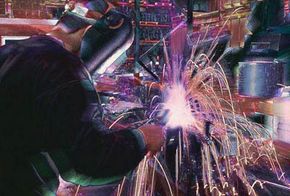No tool is quite as cool or as fun to watch as a gas blowtorch. The showers of illuminated sparks that shoot from a blowtorch at work are mesmerizing. But don't let the pyrotechnics draw you too close -- these sparks actually are small pieces of molten metal that spit off during cutting and welding.
Advertisement
A blowtorch produces an exceptionally hot flame and harnesses that heat to mold and cut metal. It does this by using highly combustible gases in the right proportions, which means that it is also a dangerous tool. Improper pressures, mishandling of the equipment, excessive sparks and messy workshops can all lead to fires, or even fatal explosions.
The invention of the blowtorch in the late 19th century thrilled pyromaniacs everywhere and revolutionized the process of welding. The earliest known evidence of welding, or connecting metal pieces by applying heat, dates back more than 3,000 years. By the Middle Ages, the process was significantly developed, and blacksmithing was a common profession. A blowtorch made it easy to cut and weld metal more precisely by focusing a high temperature on a small point.
Welders and plumbers are not the only ones who wield these fire-breathing machines. Regular folks may keep them around the house for various tasks including lighting cigars, mending jewelry and even cooking. In this article, we will discuss the components and fuel of blowtorches and how to handle one safely.


